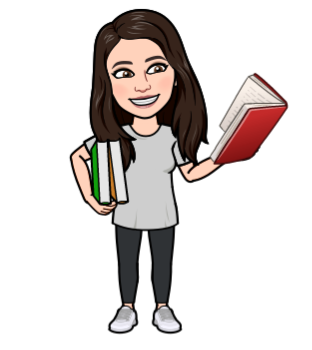

This blog was prompted by a few tweets I have seen in the past few days about supermarket shelves being dominated by the books of authors like David Walliams. Some teachers are seemingly disappointed by the popularity of these books, because they do not deem them to be challenging enough or of a high-enough quality. This blog is not an attack on those people who tweeted their own points of view. It is merely me explaining why I think reading those books is OK.

It is perhaps the lack of challenge which explains their popularity; the ‘easy read’ aspect may travel some distance in explaining the enjoyment children get from reading them. Their basic language and frequent humour allow the books to be read across different ages. In fact, the 2019 ‘What Kids Are Reading’ Report (which surveyed over 1 million children from Year 1 through to Year 12 from nearly 5000 different schools) shows that Walliams’ books are among the most read titles for children in years 4, 5, 6, 7 and 8. Therefore, it is completely understandable that supermarket shelves are stocked with Walliams’ books, as they are operating on a popularity model of supply and demand. Yes, Walliams’ books seem to dominate, but this is obviously because children actually enjoy reading them. Not only can they read them with their peers in class, but they can discuss them with children or siblings who are a couple of years younger or older than them. This surely only leads to more engagement with reading, as children have more opportunity to recommend other books from the same author or discuss parts they liked with each other. This is an opportunity for reluctant readers to engage with others about reading. An opportunity that should be capitalised upon, not condemned.
For the reluctant readers out there (of which I was certainly one as a child), books like the ones Walliams’ writes might be the only ‘buy-in’ to reading that they can find and truly engage with. They might not enjoy reading the lengthier fiction books that use long words they don’t understand (I only liked the Beano comics and Match magazine as a child). By discouraging children from reading these books, we run the risk of discouraging reluctant readers from reading altogether. Once we have children engaged with reading, then we can start to encourage them to read texts with more challenging vocabulary or more complex plots and character arcs/development. When reading independently in class or at home, they should be allowed to read what they want, otherwise reading becomes a chore.
We shouldn’t be saying to children, “Oh no, don’t read that. It’s too easy for you. Read this instead”.
We should be saying, “Why don’t you try this book when you’re finished with that one?”
When I was a child, Roald Dahl’s books were all the rage. To some extent, they still are now. Not once have I ever seen anybody criticise his writing. His plots and characters were never too complex (although wonderfully creative) and the vocabulary used was never particularly challenging (although often completely made up). His books featured a lot of peculiarity and humour. His books were read in many different year groups. See where I’m going with this? I’ve likewise never heard any criticism of Jeff Kinney’s Diary of a Wimpy Kid series, which seems to be just as popular and challenging as Walliams’ books. 2 of the top 20 books that high-achieving Year 9s read are from the Diary of a Wimpy Kid series. Should we tell them to stop reading them because they are too easy for a 14-year-old? Of course not. Francesca Simon’s Horrid Henry books don’t seem to be receiving any criticism either. The WKAR report states that 6 of the top 10 books struggling readers in Year 5 read are Horrid Henry books. Another 3 are Roald Dahl. So why the focus on David Walliams? There seems to be a bit of an unfair bias here (speaking of bias, be aware of my confirmation bias because of the stats I am using).
Another point I think a lot of people are forgetting is that we underestimate how quickly children can get through a book. The WKAR report states that children of a year 3 age tend to read around 37 books in one school year on average. What does it matter if one or even five of those happen to be Walliams’ books? Reading for pleasure is as equally important as reading to improve vocabulary, to widen our knowledge base, or improve comprehension ability. We cannot teach children how to access reading if we can’t get them enthused about reading itself. Children like to read multiple books from the same author, so let’s allow them to do so. The most important factor in fostering a love of reading is choice.
What is important is that we explain to children that popularity does not correspond with quality. The number 1 song in the pop charts is the most popular, but that doesn’t mean it has the most meaningful lyrics or the most beautifully played instruments. A film reaching the top ten grossing films of all time does not necessarily mean it is one of the most critically-acclaimed films of all time (I’m talking about you Jurassic World).
The level of challenge in books is crucially important, but so too is reading for pleasure.
All of the statistics used in this blog are taken from the most recent WKAR report for 2019.
One Reply to “Why Reading David Walliams' Books is OK”